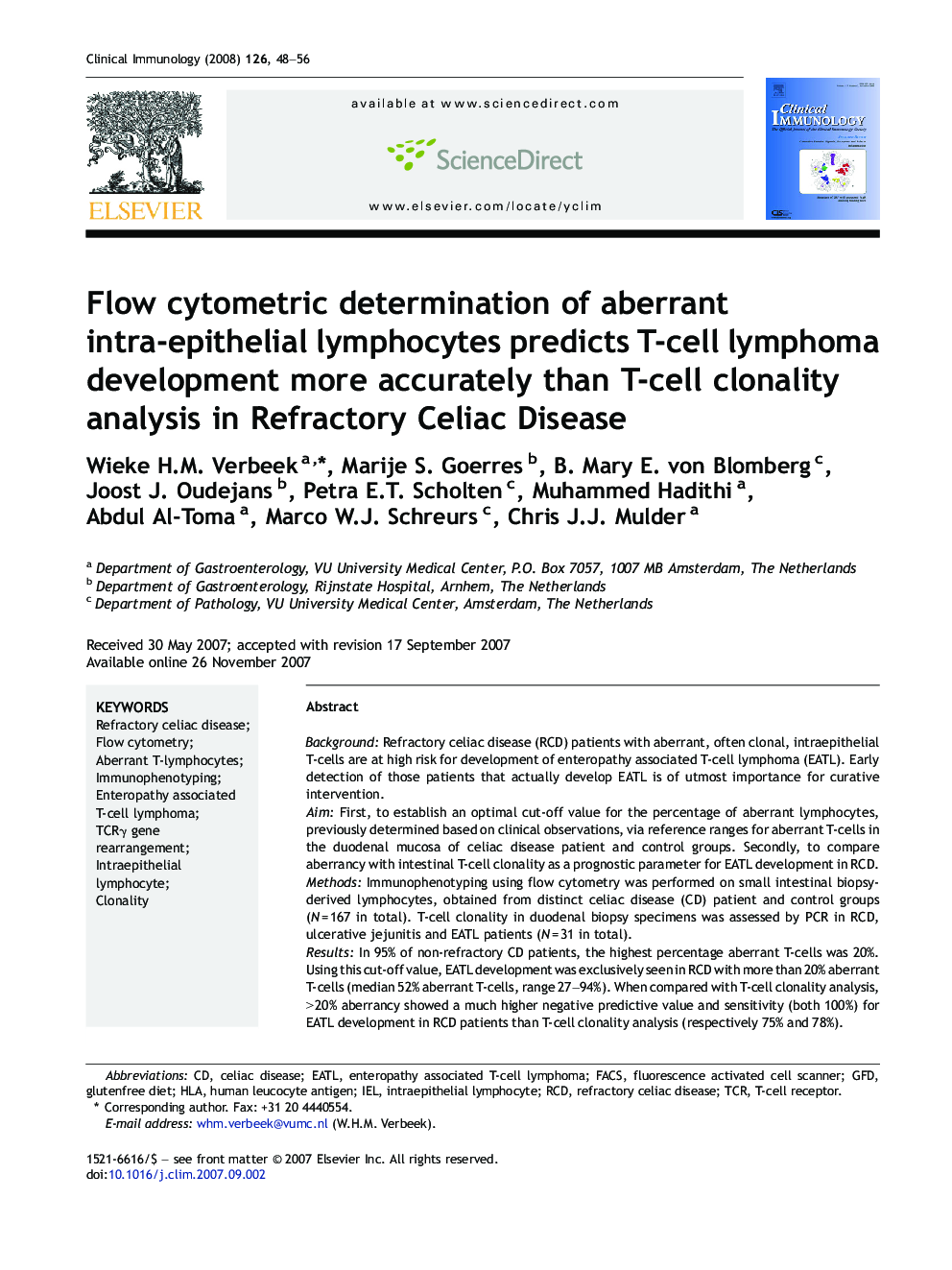| کد مقاله | کد نشریه | سال انتشار | مقاله انگلیسی | نسخه تمام متن |
|---|---|---|---|---|
| 3258315 | 1207448 | 2008 | 9 صفحه PDF | دانلود رایگان |

Background:Refractory celiac disease (RCD) patients with aberrant, often clonal, intraepithelial T-cells are at high risk for development of enteropathy associated T-cell lymphoma (EATL). Early detection of those patients that actually develop EATL is of utmost importance for curative intervention.Aim:First, to establish an optimal cut-off value for the percentage of aberrant lymphocytes, previously determined based on clinical observations, via reference ranges for aberrant T-cells in the duodenal mucosa of celiac disease patient and control groups. Secondly, to compare aberrancy with intestinal T-cell clonality as a prognostic parameter for EATL development in RCD.Methods:Immunophenotyping using flow cytometry was performed on small intestinal biopsy-derived lymphocytes, obtained from distinct celiac disease (CD) patient and control groups (N = 167 in total). T-cell clonality in duodenal biopsy specimens was assessed by PCR in RCD, ulcerative jejunitis and EATL patients (N = 31 in total).Results:In 95% of non-refractory CD patients, the highest percentage aberrant T-cells was 20%. Using this cut-off value, EATL development was exclusively seen in RCD with more than 20% aberrant T-cells (median 52% aberrant T-cells, range 27–94%). When compared with T-cell clonality analysis, > 20% aberrancy showed a much higher negative predictive value and sensitivity (both 100%) for EATL development in RCD patients than T-cell clonality analysis (respectively 75% and 78%).Conclusions:Quantification of aberrant T-cells by flow cytometry is preferable to T-cell clonality analysis for identification of RCD patients at risk for EATL development. A cut-off value of 20% is of use in risk stratification, therapeutic options and subsequent follow-up of RCD patients.
Journal: Clinical Immunology - Volume 126, Issue 1, January 2008, Pages 48–56